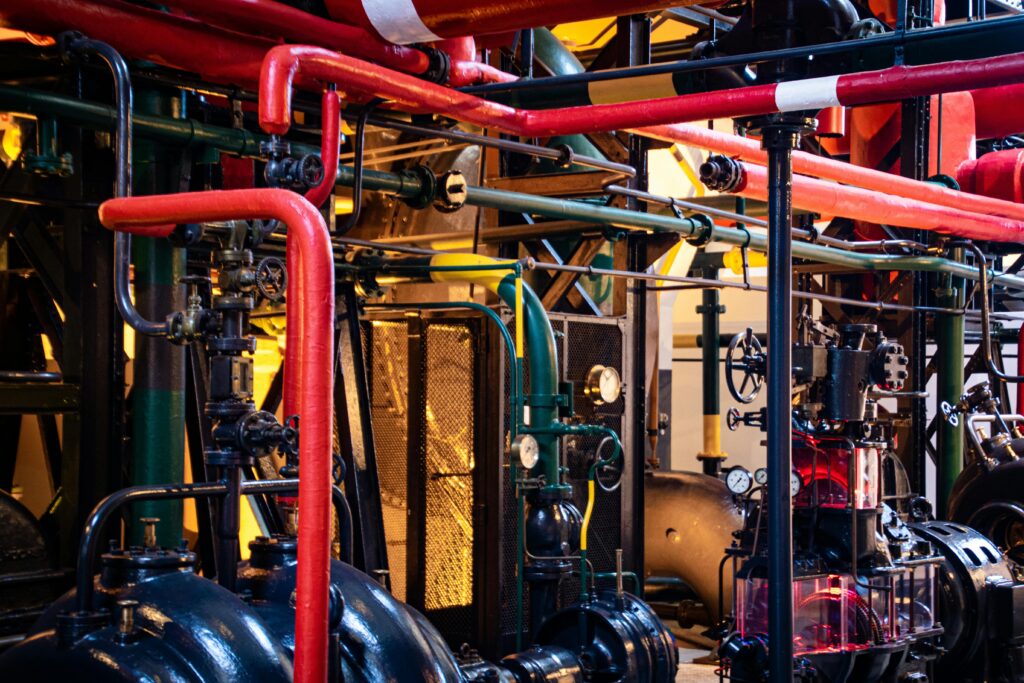The world of industrial piping solutions is constantly evolving, driven by the need to conquer the brutal demands of extreme environments. Traditional methods often struggle in high-pressure situations and environments rife with corrosion. This article explores the groundbreaking techniques that are redefining pipe construction, offering dependable and robust solutions in the harshest conditions.
High-Pressure Environments: A Crucible of Strength and Accuracy
High-pressure environments, common in oil and gas extraction, power generation, and chemical production, necessitate pipes that can resist immense internal forces. Here, material selection, design, and construction methods are paramount for guaranteeing both safety and functionality.
Material Makes the Difference:
For high-pressure applications, material selection is of utmost importance. Advanced alloys, such as chrome-molybdenum steel, are favored due to their exceptional strength and longevity. These alloys can withstand high temperatures and pressures, making them ideal for high-stress environments.
Welding with Precision:
Welding in high-pressure pipe construction demands both precision and expertise. Techniques like Tungsten Inert Gas (TIG) welding are often employed for their ability to produce strong, high-quality welds. Automated welding technologies are also gaining popularity, offering consistent results and minimizing human error.
Stress Relief Techniques:
Post-weld heat treatment (PWHT) is a critical step in high-pressure pipe construction. It involves heating the welded material to a specific temperature and then cooling it under controlled conditions. This process relieves residual stresses from welding, enhancing the overall strength and resilience of the pipes.

Corrosive Environments: Battling Chemical Onslaught
Corrosive environments present a different set of challenges. Pipes used in industries such as chemical processing, wastewater treatment, and marine applications are often under attack by aggressive chemicals and corrosive substances.
Corrosion-Resistant Materials:
In these settings, materials like duplex stainless steel and nickel alloys are popular for their superior resistance to corrosion. These materials can endure extended exposure to corrosive agents, minimizing maintenance needs and extending the pipe’s lifespan.
Protective Coatings and Linings:
Beyond material selection, protective coatings and linings play a vital role in combating corrosion. Epoxy, polyurethane, and other specialized coatings are applied to the pipe’s surface, creating a shield against corrosive elements.
Advanced Fabrication for Extreme Conditions:
For pipes used in particularly harsh chemical environments, construction techniques must ensure that coatings and linings are applied seamlessly, eliminating any weak spots that could be susceptible to corrosion.
The Future of Industrial Piping Solutions
The field of pipe construction is not stagnant; it’s a realm of continuous innovation. Advancements in materials science, welding technology, and construction processes continue to push the boundaries of what’s possible. Smart pipes equipped with sensors are on the horizon, promising real-time monitoring of pipe conditions and early detection of potential problems.
Conclusion: Meeting the Challenge Head-On
As industries venture further into extreme conditions, the demand for innovative pipe construction techniques that can withstand these demanding environments becomes ever more crucial. Through a combination of advanced materials, precision engineering, and cutting-edge technologies, the pipe fabrication industry is well-equipped to tackle these challenges head-on.
By embracing these pioneering techniques, we not only ensure the safety and efficiency of industrial operations but also pave the way for future advancements that will continue to revolutionize the field. For a more in-depth discussion, feel free to contact Scott Process.